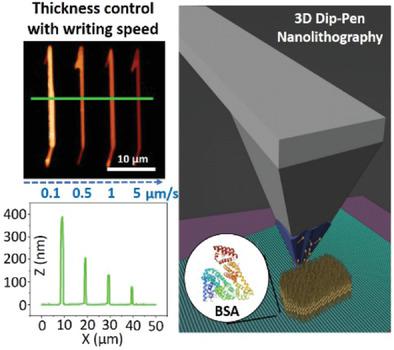
3D Nanolithography by Means of Lipid Ink Spreading Inhibition
-
Author:
E. Berganza, E. Boltynjuk, G. Mathew, F. F. Vallejo, R. Gröger, T. Scherer, S. Sekula-Neuner, M. Hirtz
-
Source:
Small 19 (2023) 2205590
- Date: 2023
-
While patterning 2D metallic nanostructures are well established through different techniques, 3D printing still constitutes a major bottleneck on the way to device miniaturization. In this work a fluid phase phospholipid ink is used as a building block for structuring with dip-pen nanolithography. Following a bioinspired approach that relies on ink-spreading inhibition, two processes are presented to build 2D and 3D metallic structures. Serum albumin, a widely used protein with an innate capability to bind to lipids, is the key in both processes. Covering the sample surface with it prior to lipid writing, anchors lipids on the substrate, which ultimately allows the creation of highly stable 3D lipid-based scaffolds to build metallic structures.
